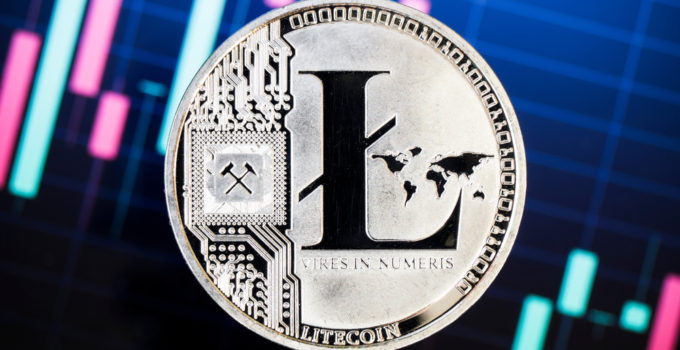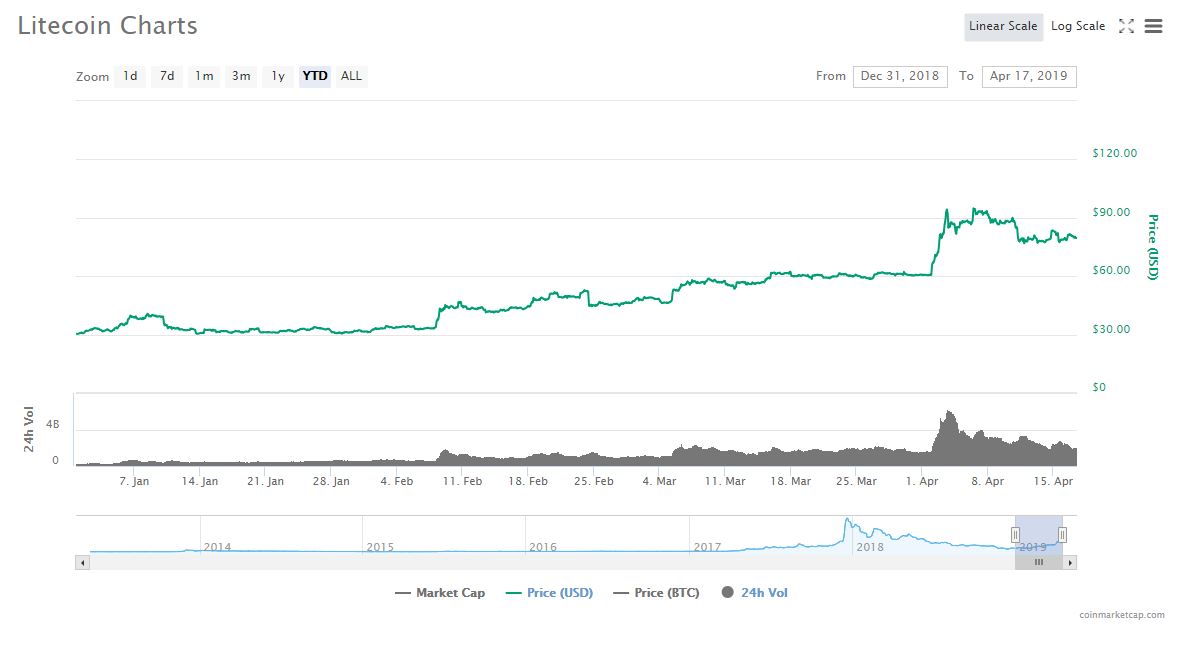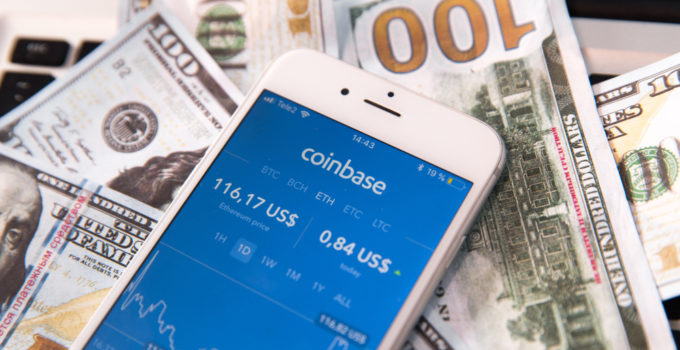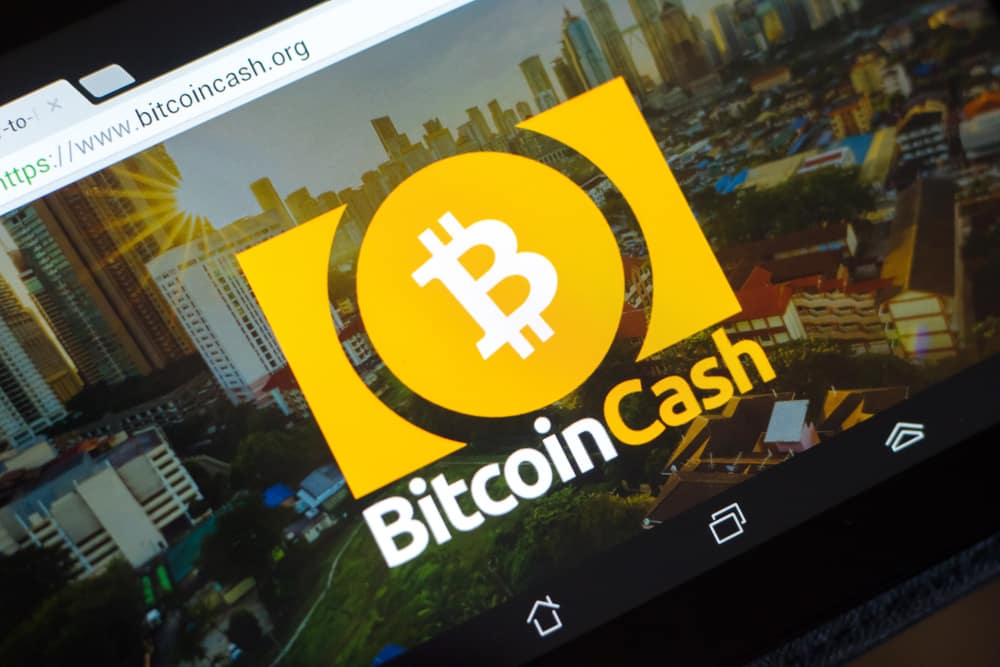Crypto Analysis - Litecoin Price Running Out of Gas After Rally
Author: Josiah Wilmoth / Source: CCN

Get Exclusive Analysis and Investing Ideas of Future Assets on Hacked.com. Join the community today and get up to $400 in discount by using the code: "CCN+Hacked". Sign up here.
By CCN: The litecoin price has been one of the cryptocurrency market’s top performers in 2019, climbing a ridiculous 162 percent since the new year.
Among large-cap cryptoassets, only binance coin has performed better, and litecoin’s year-to-date rally leaves the bitcoin price’s 40 percent advance in the dust. However, one team of crypto analysts says the sixth-largest cryptocurrency looks poised for a sell-off.
Litecoin Price Likely to Crash Through Support – And That’s OK!

Writing in a note to clients on Wednesday, crypto brokerage BitOoda said that a downward wedge has begun to form on the litecoin chart, suggesting that the cryptocurrency could be on the verge of a short-term breakdown. That sell-off would likely cause the litecoin price – which currently holds near...
CoinMarketCap to Revamp Listing Metrics After Fake Volume Research
Author: William Suberg / Source: Cointelegraph

Cryptocurrency market data resource CoinMarketCap (CMC) has promised to rearrange how it ranks member exchanges after research found overwhelming evidence of fake volume. The company confirmed the upcoming changes on social media on March 25.
CMC is arguably the industry’s best-known tracking service for the market cap of Bitcoin (BTC) and altcoins, as well as for the activity on exchanges trading them.
However, last week, research from cryptocurrency index fund provider Bitwise claimed that CMC hosts almost entirely fake volume statistics. This in turn deceives investors and inflates the profile of affected coins, Bitwise explained in the report.
Now, CMC has appeared to heed the warnings represented in the research, which Bitwise sent to United States regulators for consideration...
MIT Bitcoin Expo: Legislators Discuss Regulation, Potential of Blockchain Technology
Author: Michael Taiberg / Source: Bitcoin Magazine
Hyperbitcoinization enthusiast and writer

On March 9–10, 2019, the Massachusetts Institute of Technology hosted a two-day event, the MIT Bitcoin Expo 2019. Put together by the student-organized MIT Bitcoin Club, the conference welcomed more than just Bitcoin voices from every corner of the industry. One of those voices was that of U.S. Securities and Exchange Commission (SEC) Commissioner Hester Peirce.
Peirce sat down with Gary Gensler, ex-chairman of the Commodity Futures Trading Commission, senior lecturer at the MIT Sloan School of Management and senior advisor to the director of the MIT Media Lab, to discuss the progress of the SEC’s efforts to regulate the cryptocurrency industry. Notably, Gensler and Peirce launched into a discussion on what regulators can do better to protect investors from fraud and malicious actors.
Before the debate began, both Gensler and Peirce expressed their appreciation for the emerging technology. “It’s a new way to have tamper resistant data amongst the consensus of multiple parties,” Gensler said. “My research is mostly around the business of blockchain technology and … trying to find where are the real use cases where traditional data structures don’t work as well.”
Peirce expressed her own support for the space in relation to the SEC’s ongoing efforts to properly regulate it. “We have rules on the books that we have to enforce, but on the other hand, we don’t want to stop people from doing things that are going to make society a better place to live, that are going to make people’s lives easier, and enable people to interact in ways that they have not been able to in the past.”
Later in the presentation, the two veteran regulators went on to discuss what the government can do to protect investors by possibly regulatinged cryptocurrency exchanges.
Gensler believes that “exchanges are the gateway to get good public policy, particularly around AML laws, but also around investor protection.” He continued, “In essence, that there’s not a manipulated market with frontrunning and manipulation with the order books and the like.”
The discourse was...
Coinbase Allows Crypto Traders to Claim Bitcoin SV
Author: P. H. Madore / Source: CCN

In a note to users today, Coinbase announced that it has finally made Bitcoin SV balances available for withdrawal. Users have been complaining for months about their Bitcoin SV, which peaked shortly after launch at over $200. It has since then been in steady decline, and the announcement by both Coinbase and Waves Platform today that BSV balances will be made available might stimulate a dumping frenzy on the coin.
Coinbase Allows Crypto Traders to Claim Bitcoin SV

The note reads, in part:
“The competing chain, known as Bitcoin SV, resulted in a forked coin now commonly referred to as BSV. When the hard fork occurred, the BSV blockchain used the amount of BCH associated with an address at the time of the fork to determine the amount of BSV that would be allocated to the parallel address on the BSV blockchain. As such, the amount of BSV now available in your Coinbase.com account is the same as the amount of BCH that was in your Coinbase (Coinbase.com and Coinbase...
Bitcoin Оver $3,850 as top Cryptocurrencies see mixed trading signals
Author: Adrian Zmudzinski / Source: Cointelegraph

Sunday, Jan. 6 — most of the top 20 cryptocurrencies are seeing a mix of moderate gains and losses on the day to press time. Bitcoin’s (BTC) price is currently hovering over $3,850 again, according to Coin360 data.

At press time, Bitcoin is up just a fraction of a percent on the day, trading at around $3,870. Looking at its weekly chart, the current price has come full circle from $3,867 on Dec. 30. The current price is lower than the intra-week high of $3,946 on Jan. 2, and notably higher than the low of $3,710 reported on Jan. 1.

Ethereum (ETH) remains the second-largest cryptocurrency by market cap. The divide between ETH and Ripple (XRP) — the third-largest crypto by market cap — is increasing. Ethereum’s market cap is currently $15.9 billion, while Ripple’s market cap is $14.5 billion.
Ethereum has seen its value decrease by nearly 3 percent...
Binance Adds USDC Trading Pairs – Ripple (XRP) and stellar (XLM) to have USD Pairs
Source: CCN

Binance announced Friday that it would be adding a few new USD Coin pairs and moving its two existing USDC pairs into the combined stablecoin market called USDⓈ. Both ripple (XRP) and stellar (XLM) will have USD Coin pairs, in addition to their existing stablecoin pairs. The move involves the cancelling of any trades that exist in the current two USDC markets: BTC/USDC and USDC/BNB at the time of the move, essentially wiping the slate and creating fresh markets for the stablecoin.
The pairs being created with USDC are: BNB, BTC, ETH, XRP, EOS, XLM, and USDT. All of these will now be accessed through the USDⓈ asset market tab. They will no longer be in the regular coin exchange of Binance. It has BTC and ether as its primary base trading tokens.
| Investor CRM Platform | |
|
|
| Grow your investor Base and Raise Capital with Our Active Online Marketplace. |
|
| CROWDSTREET CONNECT | |
| Learn More |
Binance was clear on their warning about existing trades in tangential markets:
“Please note: The existing USDC/BNB and USDC/BTC trading pairs will be removed and delisted at 2018/12/16 03:00 AM (UTC). All existing orders in each order book will also be canceled at this time.”
The new markets were already showing in the advanced exchange...
Cryptocurrency Exchange OKEx Simultaneously Lists 4 Stablecoins
Author: Helen Partz / Source: Cointelegraph

The third top crypto exchange by market cap, OKEx, has recently announced the listings of four stablecoins at once, according to an official blog post published on Monday, Oct. 15.
OKEx has added support for four stablecoins, including TrueUSD (TUSD), USD Coin (USDC), Gemini Dollar (GUSD), and Paxos Standard Token (PAX). According to the schedule mentioned in the statement, the stablecoins have become available for deposits today, at 05:00 PM on Hong Kong Time (HKG), with a number of crypto trading pairs. Withdrawal will be available starting tomorrow, Oct.16.
TrueUSD is the second stablecoin that has been introduced following the launch of controversial stablecoin Tether (USDT), which is backed by the U.S. dollar on a 1:1 proportion. Both listed on major cryptocurrency exchanges like Binance, Bitfinex, OKEx, Huobi and HitBTC, the stablecoins are deployed on the Omni and Ethereum blockchain networks.
Based on tokenization platform TrustToken, TrueUSD has been touted as “world’s first legally backed stablecoin,” and went...
The Privacycoins Battles and Why Dash Is Not Really That Private
Author: Aaron van Wirdum / Source: Bitcoin Magazine

Based on blockchain technology, most cryptocurrencies have an open and public ledger. While this is required for these systems to work, it comes with a significant downside: Privacy is often quite limited. Government agencies, analytics companies and other interested parties — let’s call them “spies” — have ways to analyze the public blockchains and peer-to-peer networks of cryptocurrencies like Bitcoin, to cluster addresses and tie them to IP addresses or other identifying information.
Unsatisfied with Bitcoin’s privacy features, several cryptocurrency projects have, over the years, launched with the specific goal to improve on them. And not without success. Several of these privacycoins are among the most popular cryptocurrencies on the market today.
However, as detailed in this month’s cover story, Bitcoin’s privacy features have recently seen significant improvements as well and are set to further improve over the next months and years. This miniseries will compare different privacycoins to the privacy offered by Bitcoin.
In part one: Dash.
Background
Dash (DASH) is among the most popular but also the more controversial cryptocurrencies in the space today.
Originally a codebase fork from Litecoin (which is in turn a codebase fork of Bitcoin), Dash was launched by its founder Evan Duffield in January 2014 as Xcoin. The project was quickly rebranded to Darkcoin, seemingly in reference to Dark Wallet, a now-defunct, privacy-focused bitcoin wallet project. Darkcoin rebranded a second time in early 2015, to the current name Dash, which stands for "digital cash.” At the time of writing, Dash claims a 12th spot on the cryptocurrency market cap lists, down from a top five spot for some time in early 2017.
Much of the controversy surrounding Dash stems from the early days of the project. While the coin was not premined, it was instamined. As the cryptocurrency went live, miners created 2 million coins in a matter of days. Quite a significant amount, with a projected supply currently scheduled for a total of 22 million, and some 8 million coins in circulation today. According to Duffield, himself one of the early miners, the instamine was an accident. But instead of fixing the problem — for example, by changing the protocol rules or relaunching — it was decided that the coin would continue despite the instamine.
Since then, Dash has turned into (what it calls) a decentralized autonomous organization, or DAO, and prides itself on being the first successful example of such an organization. The DAO centers around Dash “masternodes” — DASH nodes that stake (proof of ownership) at least 1000 DASH — and should help the network in certain ways, for instance by confirming “instant transactions.” In return, these masternodes receive 45 percent of newly generated DASH.
Another 10 percent of every block reward is reserved for the Dash treasury. What happens with these funds is decided by the masternodes by vote. In practice, this money funds the Dash Core Group, effectively the company behind Dash, today headed...









